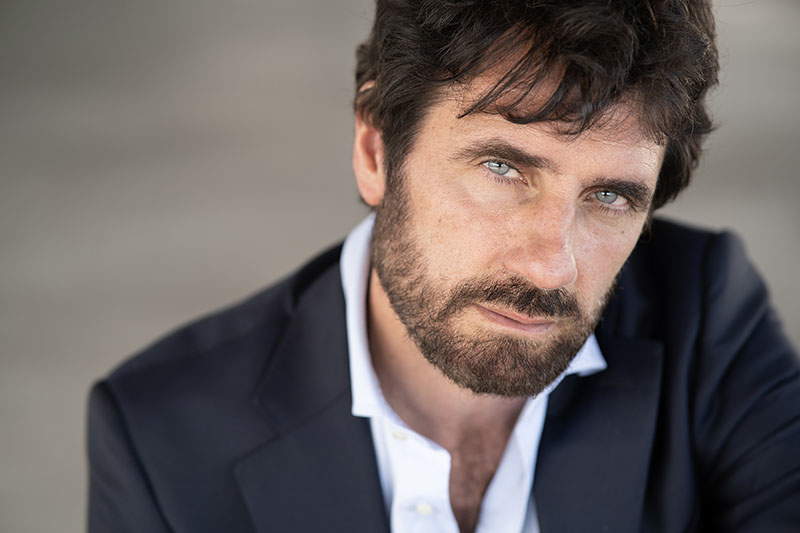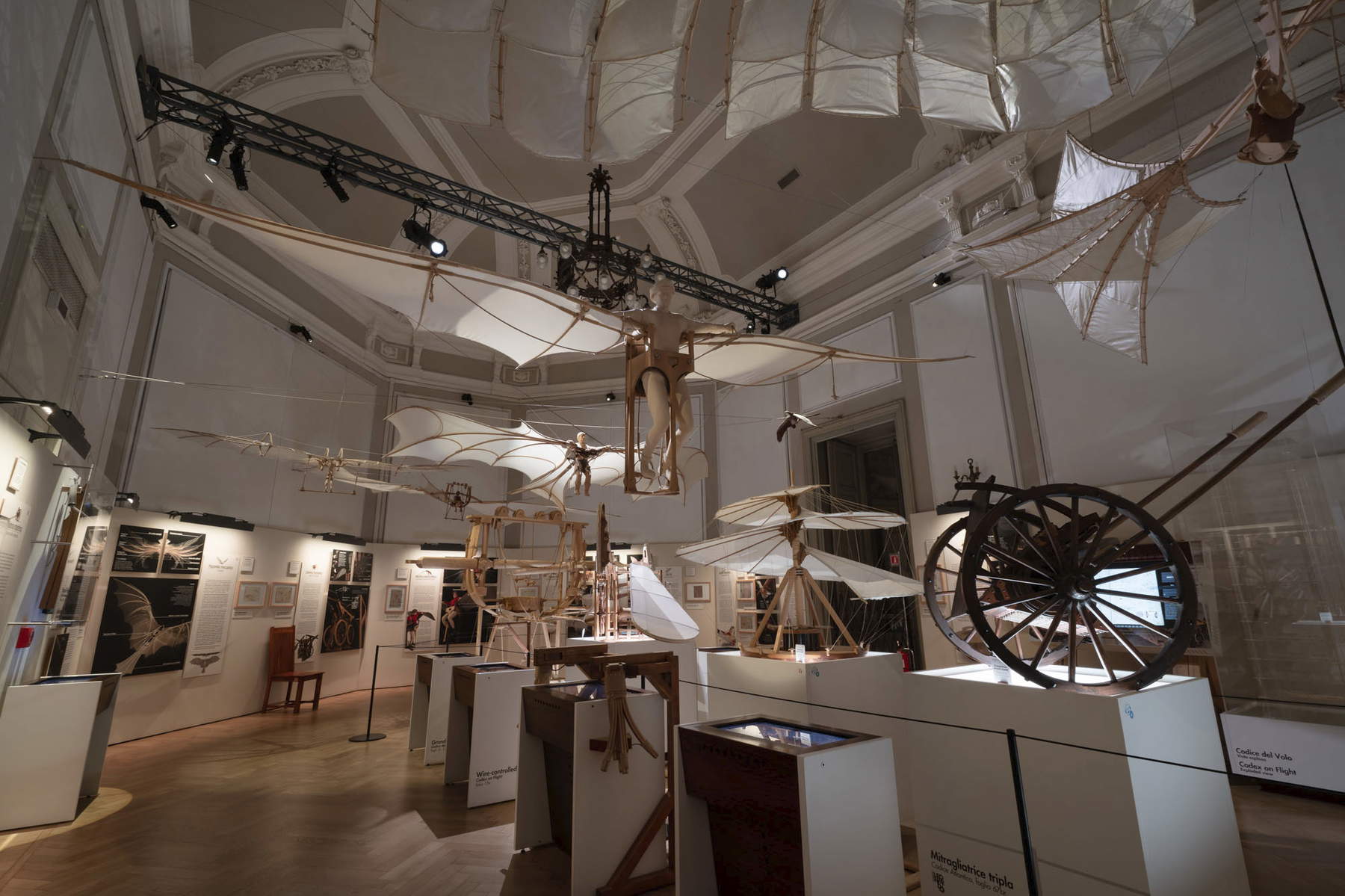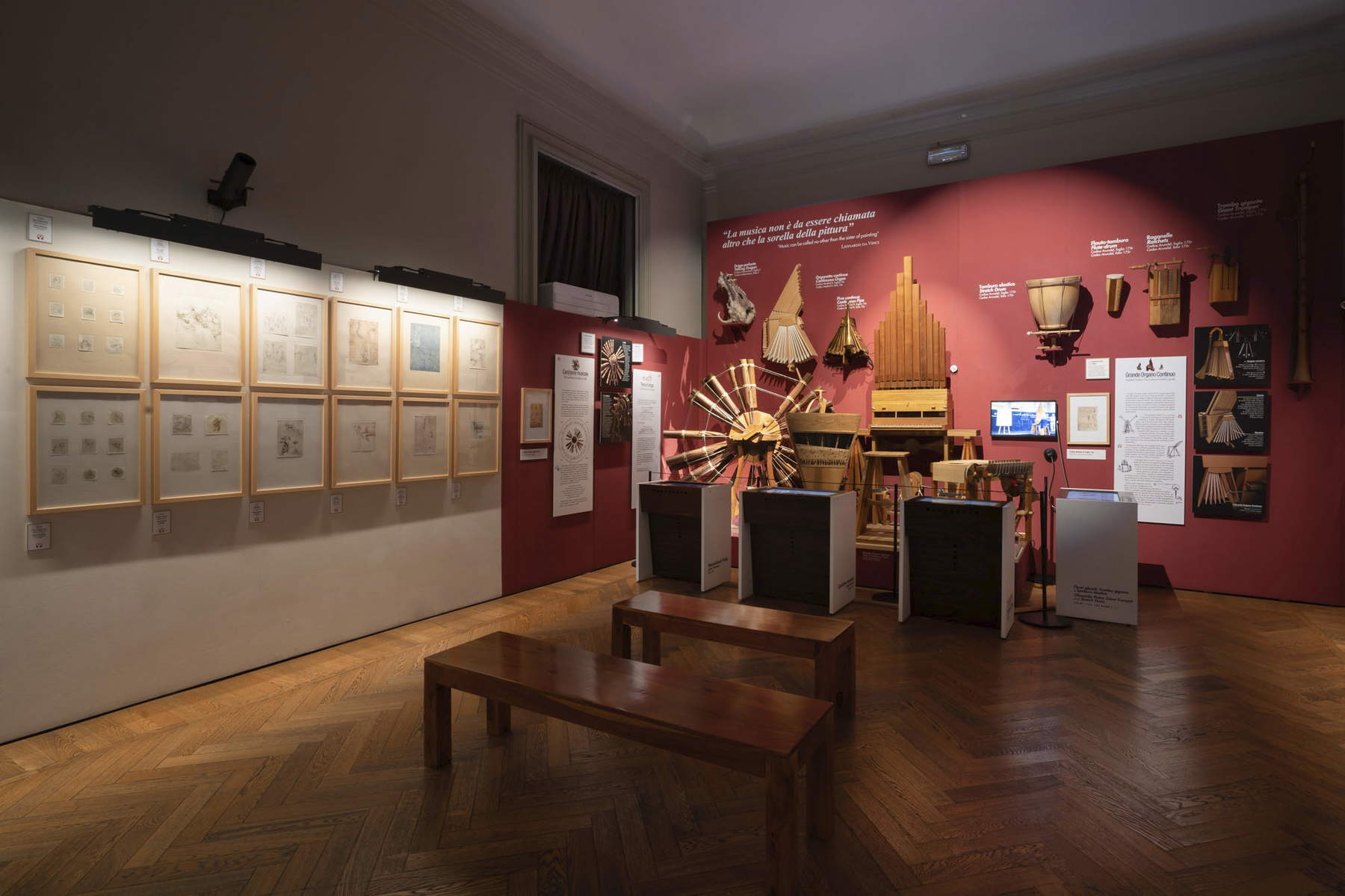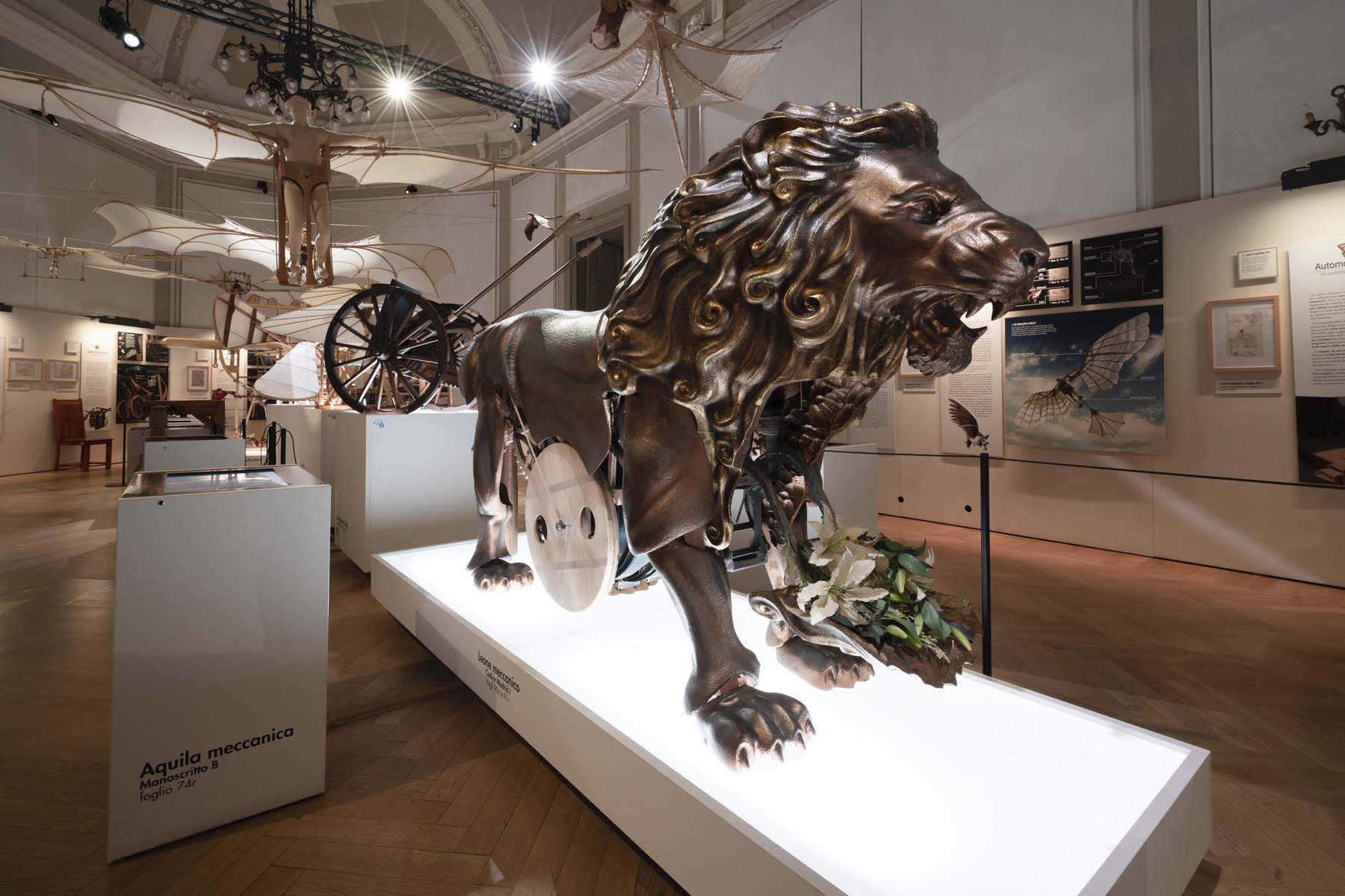The Leonardo3 Museum, the innovative museum entirely dedicated to Leonardo da Vinci in Milan’s Piazza della Scala, has just crossed the finish line of its first eleven years. In this interview, director Maximilian Lisa told us how the museum has evolved over this span of time, its main strengths and goals, its collaboration with the leading Leonardo expert, and much more. In short, a review of these years since its opening. The interview is by Ilaria Baratta.

IB. New technologies and ancient art. In February the Leonardo3 Museum presented The Paintings of Leonardo, an entire interactive and multimedia wall dedicated to twenty paintings by the great genius. How do these two souls, ancient and technological, combine in this new tool? And what is the advantage of this combination?
ML. Leonardo da Vinci was an experimenter who loved technology. He experimented to innovate technologies and reach new frontiers. And as you well know he did that in art as well, not without the well-known failures of the painting technology he used in the Battle of Anghiari and the Last Supper itself. So in Leonardo3, in keeping with what Leonardo would love, we have been using new ways and technologies for the popularization of cultural heritage for the past 20 years (that is, since we opened our study center and produce exhibitions and publications), also using theedutainment formula. Today we have become accustomed to being bombarded with information, and that is why we have not limited ourselves to user interaction with a single screen. When you touch the interactive screen, each individual painting commands a series of other screens, and at a glance you enjoy comprehensive information that goes beyond the single screen and encompasses the wall. I love to say that there is no place in the world where all of Leonardo’s pictorial work is brought together in a single virtual atelier of such immediate understanding and enjoyment.
The Leonardo3 Museum has completed its first eleven years. What is the balance of this first 10-year anniversary?
We are just coming off our 10-year anniversary, and with March 1, 2024, we have turned 11. I can proudly say that the budget is extraordinary. We are about to touch 1.7 million tickets taken out since opening. We have had a steady upward trend, from 135,000 tickets in the first year to 250,000 in 2023. I don’t think there is another museum in Italy that does 250 thousand visitors with an exhibition area of only 600 square meters. Another source of pride is that we are totally sustained by ticket revenue from our audiences. We have no subsidies, no grants, and no funding of any kind.
How has the museum evolved over this period of time?
We started out as a temporary exhibition that was to last a little over 3 months, and from renewal to renewal, we have structured ourselves, constantly updated, renewed and expanded the contents until we are now a de facto museum. I say de facto because in Lombardy (unlike other regions) we cannot get recognition as a museum since we are headed by a corporation, whereas it is required to be nonprofit.
 The
The

What are the main goals of the museum? Which have been fully achieved and what aspects, in your opinion, still need to be improved, if any?
To offer as effective an overview as possible of Leonardo artist and scientist/engineer. Two souls that were one in him. Our strength is that we do not exhibit reconstructions made by others, but everything has been studied for 20 years by our study center. And we have now accumulated a unique expertise that allows us to reconstruct machines, even working ones, that have never been made by anyone else since Leonardo’s time (such as the Great Continuous Organ or the Swift Crossbow). Our work never stops and every year we propose new things to enrich and complete the proposal more and more. But it is an endless work that will go far beyond the goals we have set for the next 20 years.
The museum employs Martin Kemp, considered among the world’s leading Leonardo experts, as its scientific contact person. An exclusive lecture by him was held on the occasion of the presentation of The Paintings of Leonardo. How was the response from the audience and how is it in general for this kind of event?
Professor Kemp has been working with us for two years, and he is one of the testimonies of how we are increasingly structuring ourselves as a museum open to the world even outside the doors of our study center. Already the fact that Professor Kemp has agreed to collaborate with us and is so enthusiastic about the museum and our work is a great honor for us. We then want our spaces to be more and more alive and open to debate and discussion. Professor Kemp’s lecture, which for those who missed it will soon be available on our Youtube channel, was a great success and is the first in a series. Another initiative I want to mention is the one that brought students and professors from the Milan Conservatory of Music to play our collection of Leonardo’s musical instruments in our Room 5 in front of our audience.
Reconstructions of Leonardo’s machines and digital restoration of his paintings: these are the strengths of the Leonardo3 museum. Can you tell us more about these two characterizing aspects?
As far as machines are concerned, there can be nothing but reconstructions since none of his (eventual) creations have survived time. And ours are different from all the others because they are the result of new studies and in many cases are unpublished and when possible even functioning (the latest example is the Mechanical Lion). As far as paintings are concerned we propose only one restoration, that of theLast Supper. Since it is already possible to go and see the original in Milan, it makes no sense to propose a copy. We propose a version restored by us (on the basis of copies by other artists of the time and the few preparatory drawings) that allows you to appreciate how the work must have looked as soon as Leonardo finished it. An operation that Kemp himself called “experimental art” whose vision proved of interest to him as a scholar as well. The new wall with all the paintings, on the other hand, does not propose restorations, but the opportunity for a single space of knowledge of the Master’s entire pictorial oeuvre. Mention should also be made of the digital codices. At the Leonardo3 Museum one can browse through Manuscript B, the Codex Atlanticus , and the Codex on Flight. In the latter, every detail is interactive: not only can you read the diplomatics and criticism of each text, but every single drawing is animated and explained in 3D.


The museum is joined by a research center and media company founded in 2005 dedicated to the work of Leonardo da Vinci. What does the benefit consist of?
It is the fundamental reason for our existence and success. Every day we study Leonardo’s work and look for new ways to present it to the public. We try to make machines that no one has ever understood or made before. For example, we were the only ones to discover that the Great Kite is hidden in the Codex on Flight and the only ones to reconstruct it. We invent new ways of technological enjoyment and experiment. After that, we present the fruits of our labor ourselves in our museum (which we manage directly) and in our temporary exhibitions that tour the world (a few weeks ago we opened one at the California Science Center in Los Angeles). Finally, we are also a publishing house and publish the fruits of our labor. Under our roof coexist the carpenter to the engineer, the art and science historian to the 3D and 2D graphic designer, the programmer, the author, the curator--all skills that are generally separated in different realities and usually communicate episodically. With us, everything is integrated into one community that has an expertise and capacity to work that I think is unique in the world. The fact that we then function on a self-funding basis keeps the bar steady that what we do has to work and have audience feedback. That is, if the museum does not sell tickets and grow, we would not exist.
Who is the average visitor to the Leonardo3 Museum?
The family. But our proposal is structured to be appreciable at multiple levels. And so we have the child who enjoys creating projects in the interactive experience of the Laboratory and maneuvering the Paddle Boat and then writes that ours is “the most beautiful museum he’s ever been to,” to the parents who linger over the Paintings or the machines to the grandparent who flips through and reads the texts of the interactive Codices. So we are a museum for all ages visited by both Italians and many foreign tourists.
Leonardo da Vinci is an artist known by everyone. What do you think is the right approach to dealing with Leonardo?
Obviously in my opinion ours: combining technology, experimentation, novel reconstructions, wonder. But without forgetting that Leonardo was great because experimentation meant risk and failure. Leonardo was not afraid to go against the grain and explore new and unknown territories. One can create something new and extraordinary only with the strength to survive one failure after another. Here we do not celebrate the unreachable Genius. But we do try to make it clear what we can also take as inspiration from Leonardo today.
In conclusion, plans for the future?
I recently reminded our entire working group that working well is something I take for granted. We, in the full spirit of Leonardo, must work extraordinarily well. So we are planning for the next 20 years to do more and more each year both on the research front and the kind of proposals we will make in the museum. We are a true laboratory of experimentation and creativity in full tribute to the Master.
Warning: the translation into English of the original Italian article was created using automatic tools. We undertake to review all articles, but we do not guarantee the total absence of inaccuracies in the translation due to the program. You can find the original by clicking on the ITA button. If you find any mistake,please contact us.